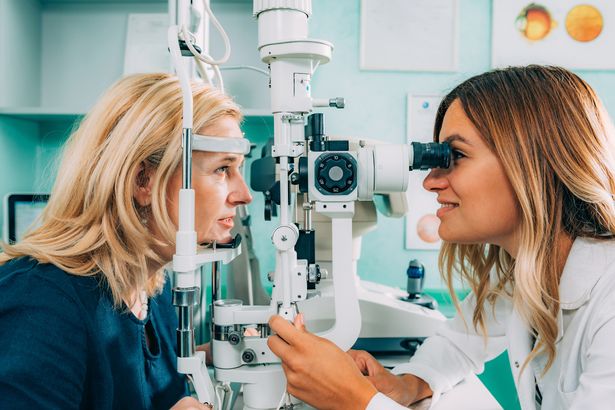Half the global adult population will suffer from short-sightedness by the year 2050 – thanks to a lack of time spent outside during childhood, amongst other risk factors.
Low level activity, prolonged time spent on near tasks, increased amounts of time indoors and genetics will see a 30 per cent increase in the condition, known as myopia, in 20 to 30 years’ time, experts warn.
In particular, ‘near work’ – close proximity to a games console, TV, phone, laptop and even pen and paper – for an increased period can cause strain on the eyes.
This doesn’t just affect adults: children are becoming increasingly myopic at a younger age, and therefore susceptible to secondary eye conditions such as glaucoma, retinal detachment and myopic macular degeneration later in life.

(Image: Getty Images)
James Morgan, professional service manager and spokesman for high street optician David Clulow, which has partnered with Vision Direct, said: “Studies have found that increasing the amount of time you spend outside can significantly delay the onset of short-sightedness in children.
“Over the last 60 years, cases of myopia have doubled in children aged 10-16 years, and studies suggest major causes to be a lack of time outside, too much time focusing on nearby objects and family history.
“We know sunlight stimulates the production of vitamin D and dopamine, which some studies show are linked to healthy eye development, which is why it is important to encourage children to go outside as much as possible.

(Image: Getty Images/Westend61)
“In addition, if parents have any concerns about their children’s eye health and vision they should contact their Optometrist, as there are many options which could slow down the progression of myopia.”
The warnings come after a Vision Direct study of 2,000 parents, of children aged four to 18, found 83 per cent are using screens more now than ever before, often in excess of five hours-a-day.
And 93 per cent of parents admit their children have got used to more time in front of displays during the pandemic.

(Image: Getty Images/EyeEm)
In addition to eye conditions, parents worry their kids will suffer other health complications such as curvature of the spine (18 per cent), neck problems (24 per cent) and poor posture (34 per cent) at an early age.
And with screen time having increased significantly over the past 12 months, four in 10 parents are now having a daily battle with their children to get them to do other things.
While half of those polled, via OnePoll, worry about their child’s resistance to going out with friends, attending clubs and sports, in favour of staying at home glued to the games console.
Four in 10 parents would go as far as saying their children are now addicted to screens, and as such 53 per cent have imposed stricter time limits on usage.
Further studies carried out among more than 120,000 children, aged six to 13, in Feicheng, China, have suggested lockdown and home confinement during the pandemic appear to be directly associated with a significant myopic shift among younger children.
Optometrist Benjamin Dumaine, speaking on behalf of Vision Direct, said: “It’s too early to say for sure how much the pandemic will affect the eye health of children, but early reports do indicate a link between time spent indoors and cases identified.
“Unfortunately, screens, although they have been a big blessing over the last few months – allowing children to learn remotely and keep in contact with friends and family – have a downside.
“And now, despite the fact that children are back in their classrooms, they’ve become more used to spending their time on games consoles, apps on their phones and watching television.
“To protect their vision and eye health going forward, parents need to strike a balance if possible, encouraging regular breaks, especially before bed, and more time doing activities outside.”


